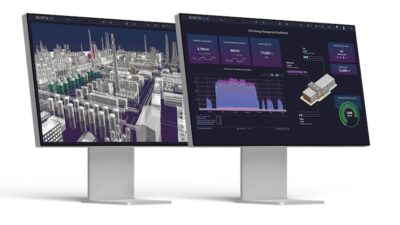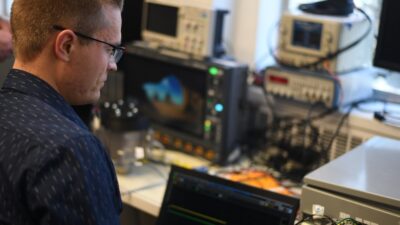Noting that “programming languages have a lifespan of about 50 years,” National Instruments president and CEO Dr. James Truchard laid out a new vision for the next 30 years of innovation at his company during the NI Week conference and exhibition, in Austin, TX. Truchard was marking the 20th anniversary of NI's LabView software, which has evolved from a desktop instrument control an...
Noting that “programming languages have a lifespan of about 50 years,” National Instruments president and CEO Dr. James Truchard laid out a new vision for the next 30 years of innovation at his company during the NI Week conference and exhibition, in Austin, TX. Truchard was marking the 20th anniversary of NI’s LabView software, which has evolved from a desktop instrument control and data acquisition tool into an integrated design, control and test platform for desktop, industrial, embedded and handheld applications.
LabView will expand into system design in the next 30 years, said Truchard, and “we plan to do for embedded systems what the PC did for the desktop.”
Programmable integrated circuits, specifically field programmable gate arrays (FPGAs), are the next frontier for National Instruments. Vice president of R&D Tim Dehne said 20% of all LabView applications today involve custom circuitry, and machine builders are increasingly using custom FPGAs to get the performance they need. FPGAs have 10 times the logic elements compared to three years ago, he said, and development of these embedded systems is taking much longer. So National Instruments is extending its expertise in creating virtual instrumentation to creating custom FPGAs. “LabView FPGA takes customizable chips and brings them to end-users,” he said.
The new LabView FPGA Wizard, which is part of LabView 8.20, automatically generates I/O code and timing structures to quickly design prototypes directly in FPGA hardware for custom, real-time I/O systems. Engineers can implement these FPGA-based targets on plug-in boards in a standard desktop PC or in NI’s PXI and CompactRIO hardware.
With the LabView 8.20 Embedded Development Module, engineers can run LabView algorithms on 32-bit microprocessor-based custom designs. New embedded targets supported in the LabView 8.20 Embedded Module include TI 6713 and Philips ARM7 229x processors, as well as QNX and MonteVista Linux embedded operating systems.
For FPGA-based development, engineers can use new machine monitoring IP libraries and add third-party IP through the VHDL node in the LabView FPGA Module. Third-party IP cores available for LabView FPGA have been validated by Xilinx, Celoxica and Impulse C.
LabView 8.20 also extends the LabView graphical dataflow language with native support for text-based math with MathScript. Engineers can integrate existing m-files created using the Matlab software, or mix LabView graphical and text-based approaches. LabView 8.20 also can incorporate algorithms from Maplesoft Maple, Mathsoft Mathcad, and Scilab software. www.ni.com


